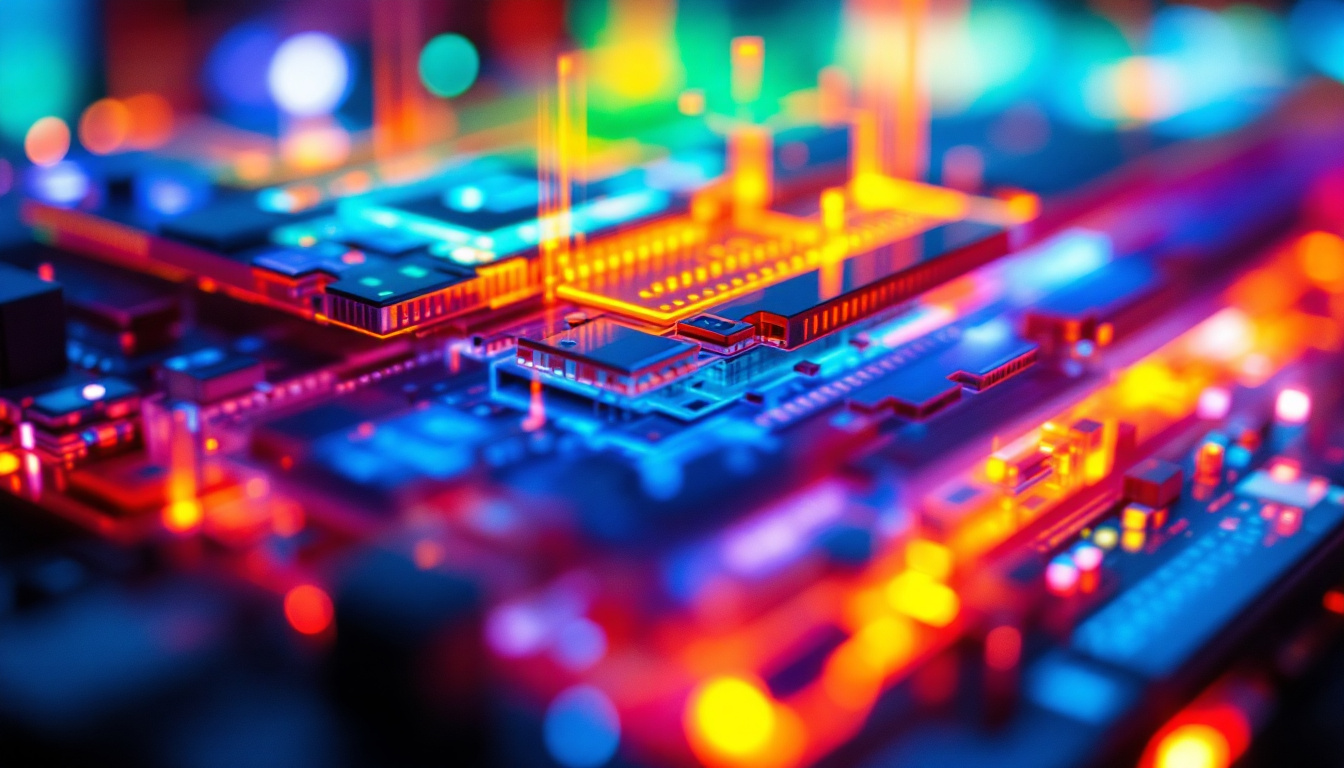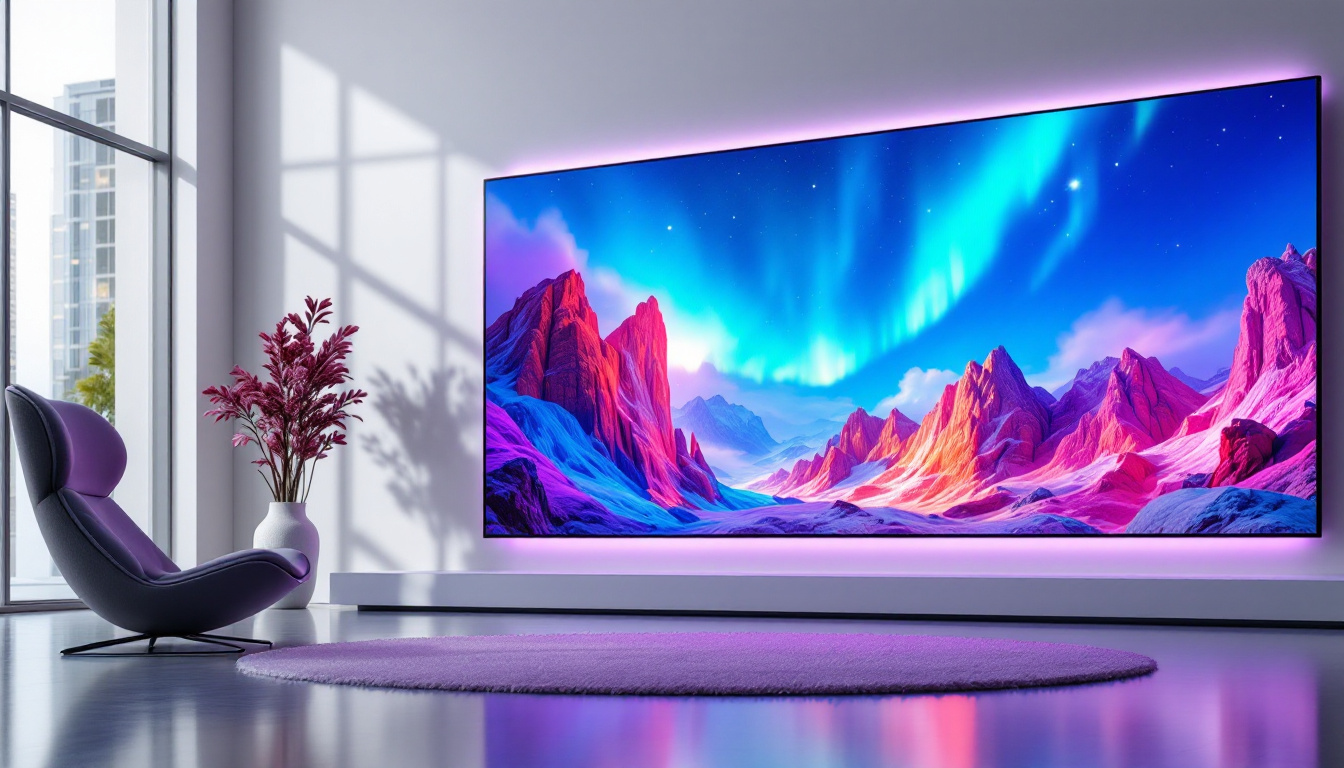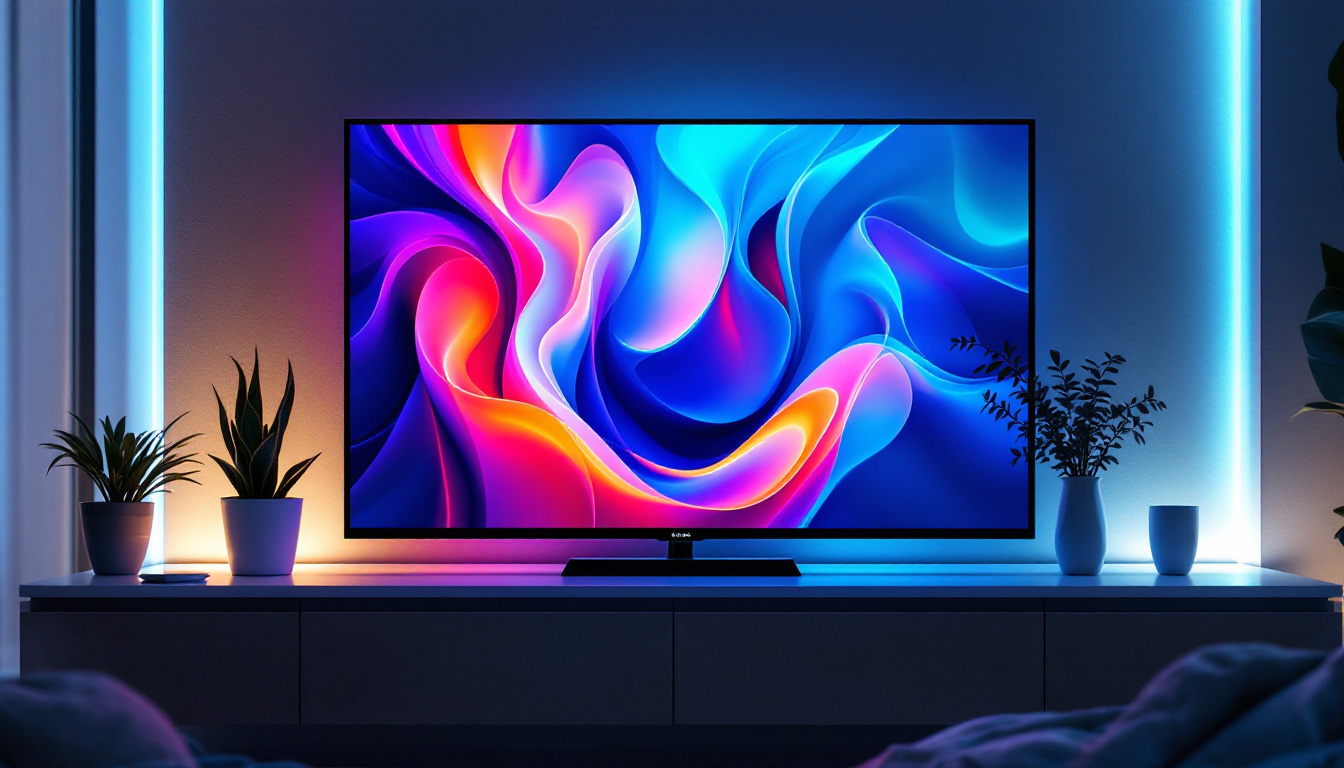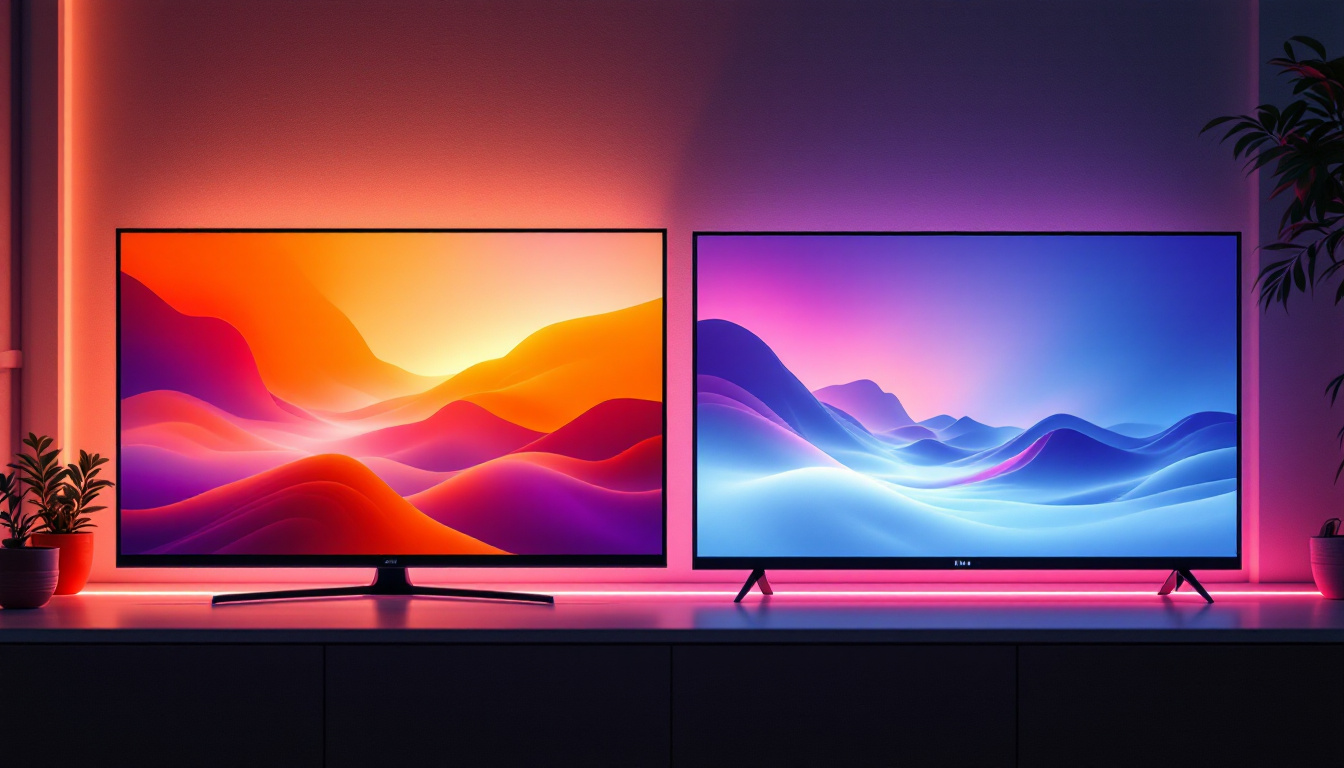How Does An LCD Work: LED Display Explained
Liquid Crystal Displays (LCDs) have become ubiquitous in modern technology, found in everything from televisions to smartphones. Understanding how these displays work, particularly in conjunction with LED technology, can provide insights into their functionality and advantages. This article delves into the mechanics of LCDs, the role of LEDs, and the evolution of display technology.
Understanding LCD Technology
At its core, an LCD is a flat-panel display technology that utilizes liquid crystals to modulate light. Unlike traditional cathode ray tube (CRT) displays, LCDs are thinner, lighter, and more energy-efficient. The magic of an LCD lies in its ability to control light without generating it directly.
The Components of an LCD
An LCD consists of several key components: liquid crystals, polarizers, electrodes, and a backlight. The liquid crystals are sandwiched between two layers of glass or plastic, and their arrangement can be manipulated by applying an electric current.
Polarizers are critical in this setup. They allow light to pass through in specific orientations. When light hits the liquid crystals, their alignment changes based on the electric field applied, affecting how much light can pass through the second polarizer. This process creates the images seen on the screen.
In addition to the primary components, LCDs also incorporate a color filter layer that enhances the display’s color reproduction. This layer consists of red, green, and blue subpixels, which combine in varying intensities to produce a full spectrum of colors. The combination of these elements allows for vibrant visuals, making LCDs a popular choice for everything from televisions to smartphones and computer monitors.
How Liquid Crystals Function
Liquid crystals are unique substances that exhibit properties of both liquids and solids. In their natural state, they can flow like a liquid but maintain a degree of order like a solid. This property is what allows them to change orientation when an electric current is applied, thus controlling the light passing through.
The two main types of liquid crystals used in displays are twisted nematic (TN) and in-plane switching (IPS). TN panels are generally faster and cheaper, making them popular for budget displays, while IPS panels offer better color accuracy and wider viewing angles, making them suitable for high-end applications. Furthermore, there are also advanced technologies like vertical alignment (VA) panels, which provide deeper blacks and higher contrast ratios, catering to users who prioritize cinematic experiences.
The Role of Backlighting
Since LCDs do not emit light on their own, they require a backlight to illuminate the display. Traditionally, this backlight was provided by cold cathode fluorescent lamps (CCFLs). However, the introduction of LED backlighting has revolutionized the industry.
LEDs are more energy-efficient, have a longer lifespan, and can produce brighter images compared to CCFLs. They also allow for thinner display designs, contributing to the sleek aesthetics of modern devices. Additionally, advancements in backlighting technology, such as local dimming and edge-lit designs, have further enhanced the performance of LCDs by improving contrast and reducing power consumption. As a result, users can enjoy a more immersive viewing experience, whether watching movies, playing video games, or working on graphic design tasks.
LED Backlighting in LCDs
LED backlighting has become the standard for LCD displays, enhancing their performance and efficiency. Understanding how LED backlighting works is essential for appreciating the advancements in LCD technology.
Types of LED Backlighting
There are primarily two types of LED backlighting used in LCDs: edge-lit and direct-lit. Edge-lit LED displays have LEDs positioned along the edges of the screen, using a light guide to distribute the light evenly across the panel. This design allows for thinner displays but can sometimes result in uneven brightness.
On the other hand, direct-lit LED displays have LEDs placed directly behind the screen. This configuration provides more uniform brightness and better contrast ratios, making it ideal for high-quality displays, although it typically results in a thicker panel.
Benefits of LED Backlighting
LED backlighting offers several advantages over traditional CCFL backlighting. One of the most significant benefits is energy efficiency. LED displays consume less power, which not only reduces electricity bills but also contributes to a smaller carbon footprint.
Moreover, LED technology allows for improved color accuracy and contrast. With the ability to control individual LEDs, manufacturers can achieve deeper blacks and more vibrant colors, enhancing the overall viewing experience.
Additionally, LED backlighting significantly extends the lifespan of LCD displays. LEDs can last up to 100,000 hours, far surpassing the lifespan of CCFLs, which typically last around 30,000 hours. This longevity means that consumers can enjoy their devices for longer periods without the need for replacement, making LED backlit displays a more sustainable choice in the long run.
Another noteworthy aspect of LED backlighting is its adaptability to various environments. For instance, many modern LED displays come equipped with features like ambient light sensors, which adjust brightness levels based on surrounding light conditions. This not only enhances the viewing experience in different lighting situations but also contributes to further energy savings, as the display can dim in darker settings.
Comparing LCDs to Other Display Technologies
While LCDs with LED backlighting are popular, they are not the only display technology available. Comparing LCDs to alternatives such as OLED and QLED can provide a clearer picture of their respective advantages and drawbacks.
LCD vs. OLED
Organic Light Emitting Diode (OLED) displays are known for their exceptional color accuracy and contrast. Unlike LCDs, which require a backlight, OLEDs generate their own light. This means that each pixel can be turned on or off independently, resulting in true blacks and vibrant colors.
However, OLED technology can be more expensive to produce, and issues such as burn-in can occur if static images are displayed for extended periods. In contrast, LCDs are generally more affordable and have a longer lifespan, making them a popular choice for budget-conscious consumers. Additionally, LCDs tend to perform better in bright environments, as they can achieve higher brightness levels without the risk of glare that can sometimes affect OLED displays. This makes LCDs a practical option for well-lit rooms or outdoor use.
LCD vs. QLED
Quantum Dot Light Emitting Diode (QLED) is another technology that has gained traction in recent years. QLED displays utilize quantum dots to enhance color and brightness. Like traditional LCDs, QLEDs use a backlight, but the addition of quantum dots allows for a wider color gamut and improved brightness levels.
While QLED displays can offer superior performance compared to standard LCDs, they often come with a higher price tag. Consumers must weigh the benefits against their budget and viewing preferences when choosing between these technologies. Furthermore, QLEDs are particularly well-suited for HDR (High Dynamic Range) content, as they can produce brighter highlights and deeper shadows, enhancing the overall viewing experience. This makes QLED a compelling choice for home theater enthusiasts who prioritize cinematic quality in their displays.
The Future of LCD Technology
As technology continues to advance, the future of LCD displays looks promising. Innovations in materials and manufacturing processes are paving the way for even better performance and efficiency.
Emerging Technologies
One area of development is in the use of mini-LED and micro-LED technologies. Mini-LEDs are smaller than traditional LEDs and can be used to create more precise backlighting, improving contrast and color accuracy. Micro-LEDs, on the other hand, are self-emissive like OLEDs but promise to eliminate issues such as burn-in, making them an exciting prospect for future displays.
Additionally, advancements in flexible display technology may lead to new applications for LCDs, allowing for curved or foldable screens that can adapt to various environments and uses. This flexibility opens up opportunities for innovative designs in smartphones, tablets, and even wearable devices, enabling manufacturers to create products that are not only functional but also aesthetically pleasing. The integration of augmented reality (AR) and virtual reality (VR) with LCD technology is also on the horizon, potentially transforming how we interact with digital content.
Environmental Considerations
As the demand for more sustainable technology grows, manufacturers are increasingly focusing on reducing the environmental impact of LCD production. This includes using recyclable materials and improving energy efficiency during the manufacturing process. Furthermore, research is being conducted into developing biodegradable components that could significantly lessen the ecological footprint of LCDs, ensuring that they contribute to a circular economy.
Consumers are also becoming more conscious of their choices, often opting for displays that align with their values regarding sustainability and energy consumption. This shift in consumer behavior is prompting brands to highlight their eco-friendly initiatives, such as energy-efficient models that consume less power and have longer lifespans. As a result, the market is likely to see a rise in certifications and labels that indicate a product’s environmental impact, guiding consumers towards more responsible purchasing decisions and fostering a culture of sustainability within the tech industry.
Conclusion
Understanding how LCDs work, particularly in conjunction with LED technology, reveals the complexity and innovation behind modern displays. From the manipulation of liquid crystals to the advancements in backlighting, LCD technology has evolved significantly over the years.
While there are various display technologies available, LCDs remain a popular choice due to their affordability, efficiency, and versatility. As new technologies emerge, the landscape of display technology will continue to evolve, offering consumers even more options for their viewing needs.
In summary, the interplay between LCDs and LED backlighting has not only enhanced the performance of displays but has also paved the way for future innovations in the field. Whether for personal use or professional applications, understanding these technologies can help consumers make informed decisions about their display choices.
Discover Cutting-Edge LED Displays with LumenMatrix
As you consider the advancements and possibilities of LCD and LED display technologies, take the next step in visual innovation with LumenMatrix. Our commitment to excellence in LED display modules brings you a diverse range of solutions, from Indoor and Outdoor LED Wall Displays to specialized options like Vehicle, Sports, and Floor LED Displays. Embrace the future of digital signage with our Custom, All-in-One, and Transparent LED Displays, designed to captivate and engage your audience. Check out LumenMatrix LED Display Solutions today and experience the power of state-of-the-art visual communication.































